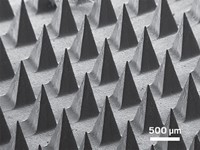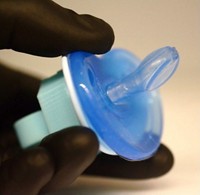Advertisement
Grab your lab coat. Let's get started
Welcome!
Welcome!
Create an account below to get 6 C&EN articles per month, receive newsletters and more - all free.
It seems this is your first time logging in online. Please enter the following information to continue.
As an ACS member you automatically get access to this site. All we need is few more details to create your reading experience.
Not you? Sign in with a different account.
Not you? Sign in with a different account.
ERROR 1
ERROR 1
ERROR 2
ERROR 2
ERROR 2
ERROR 2
ERROR 2
Password and Confirm password must match.
If you have an ACS member number, please enter it here so we can link this account to your membership. (optional)
ERROR 2
ACS values your privacy. By submitting your information, you are gaining access to C&EN and subscribing to our weekly newsletter. We use the information you provide to make your reading experience better, and we will never sell your data to third party members.
Analytical Chemistry
Graphene patch could help patients manage diabetes
Wearable, dual-function device monitors glucose in sweat and delivers drugs through skin
by Michael Torrice
March 25, 2016
| A version of this story appeared in
Volume 94, Issue 13

A wearable, graphene-based patch could one day maintain healthy blood glucose levels in people by measuring the sugar in sweat and then delivering the necessary dose of a diabetes drug through the skin (Nat. Nanotechnol. 2016, DOI: 10.1038/nnano.2016.38).
The device takes scientists a step closer to the “coveted prize” in diabetes care: a noninvasive method to monitor and control blood glucose levels, writes Richard Guy of the University of Bath in a commentary about the work.
For the new patch, the researchers, led by Dae-Hyeong Kim of Seoul National University, decided to detect glucose in sweat because previous studies had shown that levels of the sugar in perspiration match those in blood. Other groups have also developed devices that can analyze biomolecules in sweat (C&EN, Feb. 1, page 11).
The new device uses layers of the fluoropolymer Nafion to absorb sweat and carry it toward the device’s sensors, which are built on modified graphene. The team doped the graphene with gold atoms and functionalized it with electrochemically active materials to enable reactions needed to detect glucose.
In the patch’s glucose sensors, the enzyme glucose oxidase reacts with the sugar and produces hydrogen peroxide, which, through an electrochemical reaction, extracts current from the doped graphene. This produces an electrical signal proportional to the amount of glucose present. The patch also contains pH and temperature sensors that help ensure that the glucose sensor’s signals accurately reflect the sugar’s concentration in sweat.
When two healthy volunteers wore the patch, the measured glucose levels—including spikes after meals—matched those from a commercial glucose meter. To monitor the levels, the patch sent its sensor signals to a device that analyzed them and then wirelessly relayed the data to a smartphone.
The drug delivery half of the patch consists of an array of 1-mm-tall polymer microneedles that pierce the skin. Each needle is made from a mixture of the diabetes drug metformin and a dissolvable polymer, polyvinyl pyrrolidone. And the needles are coated with a layer of tridecanoic acid. A gold and graphene mesh sits on top of the needle array and serves as a heater that can melt the coatings. Once the tridecanoic acid melts, the needle dissolves in the skin and releases its drug payload.
When researchers applied just the drug delivery component to the stomachs of diabetic mice, they could deliver enough metformin to lower the animals’ elevated blood glucose levels by more than 50% in six hours.
Guy thinks the sensor portion of the patch is closer to real-world use than the drug delivery component. To make the drug delivery system practical, he says, the researchers must make the microneedle array as small as possible. That means they must find a drug that’s effective at low doses.
As for the glucose detection half of the device, Guy wonders how often a user would have to calibrate the sensors to ensure accurate readings.
Still, he calls the patch an impressive proof of concept.
This article has been translated into Spanish by Divulgame.org and can be found here.





Join the conversation
Contact the reporter
Submit a Letter to the Editor for publication
Engage with us on Twitter